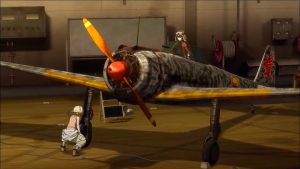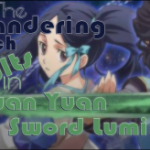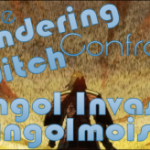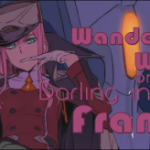The Wandering Witch Flies High with The Magnificent Kotobuki

Welcome, all, again. As we settle into a new viewing season, today’s subject will be the just-concluded The Magnificent Kotobuki, which might surprise regular readers who know how much I normally dislike CGI animation. (And new stuff in general. But, hey, I’m old and grouchy. And I’ve earned it, too!) Now, don’t get me wrong–CGI animation can come in very useful for particularly detailed images, especially of a mechanical persuasion. Say, for instance, architectural details or even aircraft of various types. . .where CGI animation usually leaves me cold is with character design and movement. And to go ahead and acknowledge and reference the glaring exception to my own rule, here, let’s once again look back to Kemono Friends: the characters were kind of jarring to the eye at first, and their movements were often simply laughable. This show became so successful in large part because its animation was so terrible–but that kind of reception cannot be expected to occur often.
So, enough about CGI (for now, at least!)–what about the show itself? It seems to be set in some sort of post-apocalyptic world wherein the human population has been seriously decimated, and business is accordingly conducted through a type of barter system. (This mirrors Europe during the Dark Ages: with the collapse of the Roman Empire and its monetary system–and then the ravages of plague–most of Europe returned from a monetized economy to a barter system. Spice and Wolf conversely portrays the gradual replacement of barter with a monetized economy.) Because the land is sparsely inhabited and large settlements are few and far-flung, the safest and most practical method of transportation is through the air. Huge zeppelins ply the skies carrying both people and freight, while resurrected fighter planes provide protection. . .or a means of attack! Mind you, there are some airplanes being used for transport, but they seem fairly uncommon. By and large, the zeppelins rule that industry.

One such transportation company is the Oni Company, owned by a no-nonsense businesswoman called Madame LouLou. In an effort to protect her zeppelin and cargo, she hires an all-female fighter squadron called the Kotobuki Squadron, comprised of six pilots and a mechanic. This group flies only Hayabusa fighters, beautiful Japanese land-based fighters used by the Imperial Army during World War II. (With so many iconic Naval aircraft tied to the same period, the Hayabusa seems a strange choice to be stowed in and launched from an airship. I would have at least expected something with retractable wings.) This is a young squadron, having much more experience than they do years, but who can argue with over 200 confirmed aircraft kills split amongst just 6 pilots? These ladies mean business, and business is LouLou’s language!
As the series progresses, however, the nature of the Kotobuki Squadron’s assignments changes, eventually changing their role in the show, as well. In the beginning, they are basically providing a contracted security service to a shipping company. By episode 3, they have moved beyond their initial assignment to protect a zeppelin and have taken on the security of an entire town, albeit still contracted through Madame LouLou. But none of this happens in a vacuum, and the political climate of their world is shifting. Moving towards the season’s conclusion, the squad find themselves fighting in an actual war as they try to prevent the expansion of a nascent empire.

Well, Kate, it’s about your hair. . .
Despite its awkward telling, this show gives us a riveting story, complemented by some gorgeous and highly detailed artwork with the various aircraft. This is the kind of work that CGI does best! You might contrast that with the character designs and movement–I spent the entire first episode thinking that Kate’s hair was probably the ugliest hat I’d ever seen. Not until the second episode–when her hair remained in place relative to her head movements–did I even realize that it was supposed to be hair. Yes, it was really that bad. But again, the story itself is a rollicking good tale in the vein of Porco Rosso: outnumbered almost-heroes combating ruthless air pirates above a threatened populace. So grab you airsick bag and strap in–it might be a bumpy ride(!), but we can always hope for a smooth landing. . .and perhaps hair that stays put.















iStalk? uStalk!